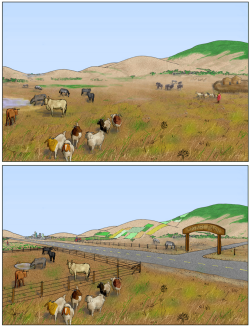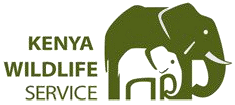
Every landscape changes, but those in southwestern Kenya are changing rapidly. There are many changes that wildlife, livestock, and the people that rely upon them must adapt to. We will highlight those that are most important to this work.
Landscape Fragmentation
Areas of Norak and Kajiado Districts, Kenya, used to be used communally by Maasai pastoralists. In the 1970s these lands were divided into group ranches, where people used smaller ranches communally. Later, most of those ranches were divided into small parcels owned by individuals. Some people have fenced their parcels, which creates a form of fragmentation we call isolation. Others have leased or sold their land to people wanting to do agriculture, put up buildings, or otherwise change the land cover. This form of fragmentation is loss, since it is no longer available to grazers.
We describe
fragmentation in the area more fully.
Climate Change
The global use of fossil fuels is releasing the carbon trapped for millions of years into the atmosphere. A global team of scientists,
members of the Intergovernmental Panel on Climate Change, agree that it is highly likely that the increase in carbon is changing the global
climate. They also agree that models that predict more profound changes in the future are reasonable. Inhabitants of Narok and Kajiado Districts
contribute few greenhouses gases to the atmosphere, but are among the first to have to deal with the effects. Temperature is projected to increase, and
precipitation in Kenya may increase somewhat. Most importantly, the variability in precipitation will increase, and extreme events will become more severe. That means in Kenya droughts that are more extreme, and are closer together. This pattern has already been confirmed in South Africa. The effects of more frequent droughts on wildlife, livestock, and the people that rely upon them would be profound.
More detail on
climate change in the area is provided.
 Every landscape changes, but those in southwestern Kenya are changing rapidly. There are many changes that wildlife, livestock, and the people that rely upon them must adapt to. We will highlight those that are most important to this work.
Every landscape changes, but those in southwestern Kenya are changing rapidly. There are many changes that wildlife, livestock, and the people that rely upon them must adapt to. We will highlight those that are most important to this work.










